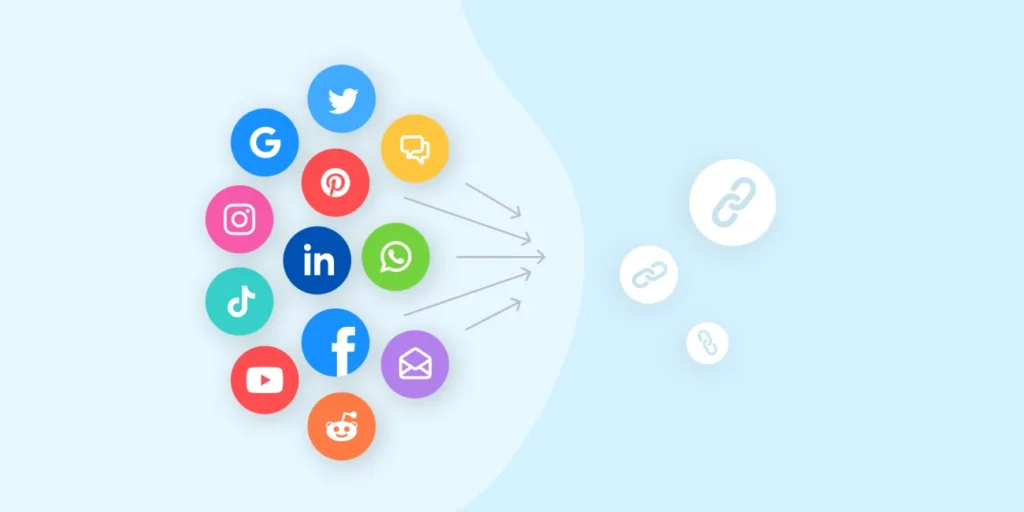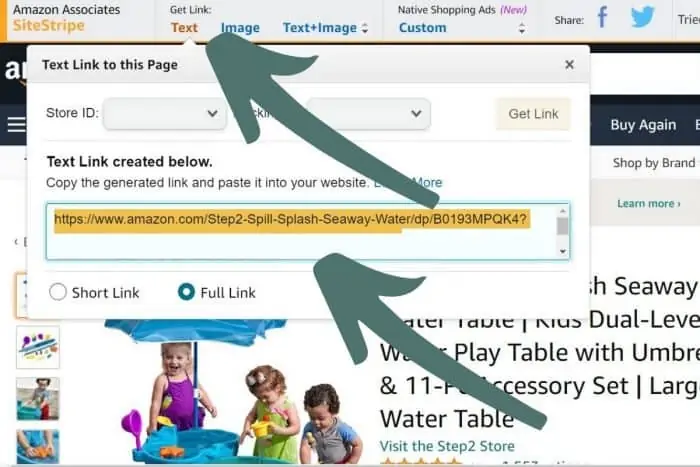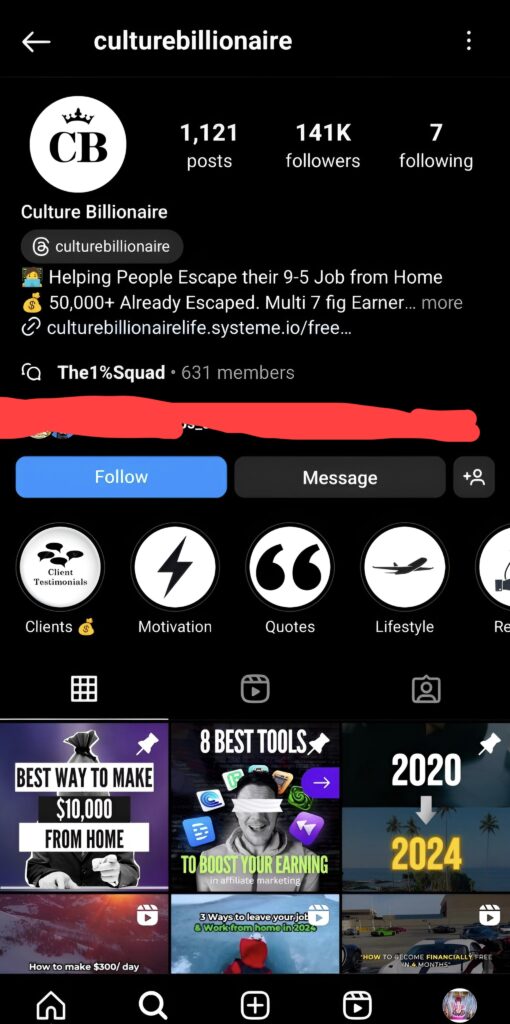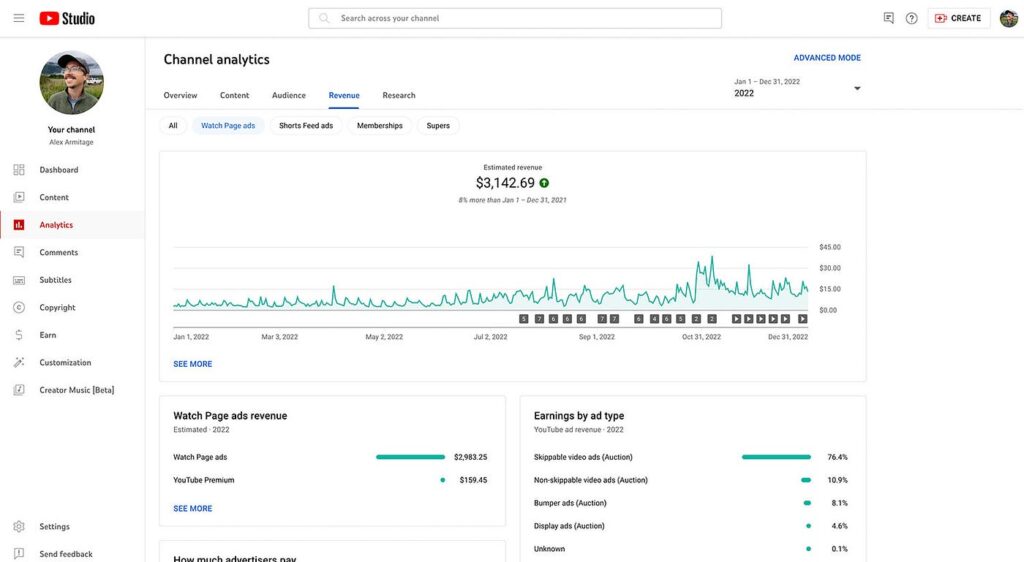Ever wanted to make money online without a big investment? Affiliate marketing lets you do just that! This guide shows you how to promote affiliate links for free. We’ll cover social media tricks and content creation tips to get you clicks and commissions, all on a budget of zero dollars.
So, are you a total beginner or a seasoned pro? No matter your experience, this guide will unlock the secrets to promoting affiliate links without spending a cent.

Before You Start To Promote Affiliate Links, You Have To Done This First:
First things , before I share all of the ways to promote affiliate links, make sure you check out this post:
The Best Guide to Affiliate Marketing for Beginners in 2024
Before you jump into promoting affiliate links and dream of raking in the cash, there’s a crucial step you might be overlooking. This intro grabs attention and highlights the importance of a step often missed by affiliate marketing beginners.
How Affiliate Links Work:

Affiliate marketing is a powerful strategy that allows individuals to earn commissions by promoting products or services offered by other companies. At the heart of affiliate marketing lies the affiliate link, a unique URL assigned to each affiliate marketer to track their referrals and sales.
Let’s delve into how affiliate links work and the mechanics behind this lucrative model.
- Affiliate Relationship: Affiliate marketing operates on a analogy relationship between three parties: the merchant (seller), the affiliate (promoter), and the customer. The merchant sells a product or service, the affiliate promotes it, and the customer makes a purchase.
- Unique Affiliate Links: When an individual signs up for an affiliate program, they are given a unique affiliate link. This link contains a special tracking code that identifies the affiliate, allowing the merchant to attribute any sales generated through that link to the affiliate.
- Promotion and Referral: The affiliate then promotes the product or service using their affiliate link through various marketing channels such as websites, blogs, social media, email newsletters, or YouTube videos. When a potential customer clicks on the affiliate link, they are redirected to the merchant’s website.
- Tracking and Cookies: Once the customer lands on the merchant’s website through the affiliate link, a tracking cookie is placed on their device. This cookie records information such as the affiliate’s ID, the product clicked on, and the time of the click.
- Conversion and Commission: If the customer makes a purchase within a certain timeframe (typically within the cookie’s lifespan, which can range from a few hours to several months), the sale is attributed to the affiliate. The merchant’s system recognizes the cookie and credits the sale to the affiliate, who earns a commission for the referral.
- Commission Structure: The commission structure varies depending on the affiliate program and can be based on a percentage of the sale amount or a fixed amount per sale. Some programs offer tiered commissions, where affiliates earn higher rates as they generate more sales or reach specific milestones.
- Payment and Payout: Affiliate commissions are usually paid out on a predetermined schedule, such as monthly or quarterly. Payment methods can vary and may include direct bank transfers, PayPal, or checks.
- Transparency and Compliance: It’s essential for affiliates to disclose their relationship with the merchant and the fact that they may earn commissions from the products or services they promote. Compliance with regulations, such as the Federal Trade Commission (FTC) guidelines, ensures transparency and trust between affiliates and their audience.
Affiliate links serve as the bridge between affiliates and merchants, allowing marketers to earn commissions for driving sales or leads. With the right strategies and effective promotion, affiliate marketing can be a lucrative income stream for individuals looking to monetize their online presence and marketing skills.
Best Ways To Promote Affiliate Links:
1.Add Affiliate Links To Your Blog Posts:

Affiliate Links into your blog content is a powerful way to monetize your audience and create a win-win situation. You recommend products you genuinely love, and readers can discover helpful resources while you earn a commission on qualifying purchases. But the key lies in doing it strategically and authentically.
Here’s how to incorporate affiliate links naturally within your blog posts:
- Focus on Relevance: Don’t just shove affiliate links anywhere. Make sure the products or services you promote are directly relevant to your niche and the content of your blog post. If you’re writing about gardening tips, for instance, you could recommend affiliate links for gardening tools, fertilizer, or seed varieties. This shows your audience you understand their needs and offers genuine value.
- Provide Context and Value: Don’t just drop a link and expect clicks. Briefly explain why you recommend the product or service. Highlight its features and benefits, and how it can solve a specific problem your reader faces. You can even share your personal experience using the product to build trust and credibility.
- Craft Compelling CTAs: Craft clear calls to action (CTAs) that entice readers to click on your affiliate links. Instead of a dry “Click here,” use phrases like “Check out the latest features [product name] offers here” or “Get yours today and see the difference for yourself!”
- Maintain Transparency: Be upfront and disclose that you’re using affiliate links. Most websites have a dedicated disclosure policy outlining this practice. You can also add a quick note within the blog post itself, letting readers know you might earn a commission if they click through and make a purchase. Transparency builds trust and shows you’re not just out to make a quick buck.
2.Promote Affiliate Links On A Resource Page:
A dedicated resource page is another excellent way to showcase your favorite affiliate products and services.
Here’s how to create a compelling resource page:
- Categorize for Easy Navigation: Organize your recommendations into categories relevant to your niche. This makes it easier for readers to find what they’re looking for, whether it’s productivity tools, travel essentials, or photography gear.
- Go In-Depth with Reviews: Don’t just list products; provide in-depth reviews. Briefly explain what each product does, its pros and cons, and who it might benefit most. You can even include high-quality images or short video reviews to enhance the user experience.
- Update Regularly: The digital landscape is constantly evolving, so make sure your resource page stays fresh. Regularly update it with new products and remove outdated ones. This shows your audience you’re committed to providing valuable and relevant information.
By incorporating affiliate links strategically and maintaining transparency, you can turn your blog into a valuable resource for your audience while generating revenue.
3.Affiliate Banner Ads And Sidebar Ads:
Attract your audience and generate revenue by incorporating visually appealing banner ads or sidebar ads on your website or blog.
Here’s how to make them shine:
- Target Your Audience: Don’t bombard your visitors with irrelevant ads. Partner with companies that offer products or services that complement your content and target audience. This increases the chances of clicks and conversions, benefiting both you and the advertiser.
- Design Matters: Gone are the days of clunky, distracting banner ads. Opt for visually compelling designs that blend seamlessly with your website’s aesthetic. Use high-quality images, clear calls to action, and concise messaging to grab attention without appearing intrusive.
- Prime Placement: Strategic placement is key. Consider using heatmaps to analyze visitor behavior and identify areas of high engagement. Popular spots include the top of the fold (the section visible without scrolling), within relevant blog posts, or along the sidebar.
- Track and Test: Don’t settle for assumptions! Regularly monitor the performance of your banner ads. Track metrics like click-through rates (CTRs) and conversions to see what resonates with your audience. A/B testing different ad variations allows you to refine your approach and maximize results.
4.Add Affiliate Links To Your Free Lead Magnets:
Turn your free lead magnets, like ebooks or templates, into passive income generators.
Here’s how to strategically embed affiliate links:
- Offer Valuable Content: Provide high-quality, informative content that genuinely addresses your audience’s needs. This builds trust and encourages them to explore the additional resources you recommend.
- Natural Integration: Don’t force affiliate links. Weave them organically into your content where relevant. For example, within an ebook discussing productivity tools, you could mention a specific time management app and include an affiliate link for readers to learn more.
- Transparency is Key: Be upfront about using affiliate links. Disclose this information clearly to your audience. This builds trust and demonstrates that you’re recommending products you genuinely believe in.
- Track Performance: Monitor the performance of your affiliate links just like your banner ads. Track clicks and conversions to see which offers resonate with your audience and where adjustments might be needed.
By implementing these strategies, you can leverage affiliate marketing opportunities and strategically place ads to generate revenue without compromising user experience.
5.How To Promote Affiliate Links On Facebook:

Facebook, with its vast user base, offers a goldmine for affiliate marketers. But simply dropping your affiliate links everywhere won’t get you far. Here’s how to strategically leverage Facebook groups, pages, and ads to reach your target audience and effectively promote affiliate products:
Build a Community:
- Facebook Groups: Find or create a group centered around your niche. Share valuable content, answer questions, and establish yourself as a trusted authority. This builds trust and makes affiliate promotions more natural.
- Facebook Pages: Create a Facebook Page for your brand or niche. Regularly post informative and engaging content related to your affiliate products. This keeps your audience interested and coming back for more.
Here are some additional tips for Facebook affiliate marketing success:
- Run contests and giveaways: People love free stuff. Offer exciting contests or giveaways featuring your affiliate products to generate buzz and attract new followers.
- Partner with influencers: Collaborate with influencers in your niche to promote your affiliate products. Their established audience can give your promotions a significant boost.
- Track your results: Use Facebook analytics to track the performance of your posts and ads. This data will help you refine your strategy and maximize your return on investment.
By following these tips, you can leverage the power of Facebook to effectively promote your affiliate products and build a loyal following.
6.How To Promote Affiliate Links On Instagram:

Instagram, with its focus on visuals, offers a unique platform for promoting affiliate products
. Here’s how to leverage Instagram’s features to showcase affiliate products authentically and connect with your audience:
1. Create Engaging Content:
- High-Quality Photos and Videos: Instagram is a visual platform, so high-quality photos and videos are essential. Showcase the features and benefits of your affiliate products in a visually appealing way.
- Stories and Reels: Utilize Instagram Stories and Reels to share behind-the-scenes glimpses, product tutorials, and user-generated content featuring your affiliate products. This creates a more personal and engaging experience for your followers.
- IGTV: For longer-form content, IGTV allows you to create in-depth reviews, tutorials, or demonstrations of your affiliate products.
Here are some additional tips for Instagram affiliate marketing success:
- Use relevant hashtags: Hashtags help people discover your content. Research and use relevant hashtags related to your niche and affiliate products.
- Post consistently: Stay top-of-mind with your audience by posting consistently. However, avoid overwhelming them with too many posts.
- Track your results: Use Instagram Insights to track the performance of your posts and stories. Analyze what resonates with your audience and adjust your strategy accordingly.
By implementing these strategies, you can turn Instagram into a powerful tool for promoting your affiliate products and building a thriving community around your brand.
7.Adding Affiliate Links On Pinterest:

- Visually Appealing Pins: High-quality images are key – think mini-billboards!
- Compelling Descriptions: Highlight features, benefits, and entice clicks to your content.
- Strategic Links: Send users to relevant blog posts, landing pages, or the product itself.
- Organized Boards: Categorize pins to target specific interests and improve search discovery.
- Keyword Magic: Include relevant keywords in descriptions and board titles for better searchability.
- Clear Calls to Action: Tell users what to do next – “Shop Now,” “Learn More,” etc.
- Consistent Posting: Regularly create high-quality pins to stay engaged and visible.
8.How To Promote Affiliate Links On Twitter:
- Captivating Hooks: Grab attention in those first 280 characters!
- Highlight Value: Briefly explain how the product benefits your audience.
- Seamless Affiliate Links: Integrate shortened links naturally into your tweets.
- Hashtag Power: Use relevant hashtags to expand your tweet’s reach.
- Visual Appeal: Add images or GIFs to make your tweets stand out.
- Engage and Respond: Foster conversation by replying to comments and questions.
- Experiment and Track: Discover what works for your audience and refine your strategy.
9.Where To Add Affiliate Links?
Affiliate marketing can be a fantastic way to generate income by promoting products and services you love. But where exactly do you place those affiliate links? Here are some creative ideas that go beyond just adding them to your blog posts:
Your E-mail list is a goldmine for affiliate marketing. Here’s why:
- Targeted Audience: You’ve already built a relationship with your subscribers and understand their interests. This allows you to recommend relevant products or services they’ll genuinely find helpful.
- Direct Communication: Emails offer a more personal touch than social media posts. Craft compelling email campaigns highlighting the benefits of affiliate products and weave in your affiliate links naturally.
Pro Tip: Don’t just bombard your subscribers with sales pitches. Focus on providing valuable content and recommendations, and affiliate links will become a natural extension of your message.
10.Promote Affiliate Links Through Courses:
If you share your expertise through online courses or workshops, this is a prime opportunity to incorporate affiliate promotions seamlessly. Here’s how:
- Resource Lists: Compile resource lists for your students that include affiliate products or services that complement the course content. Explain how these resources can enhance their learning or help them achieve their goals.
- Case Studies: Showcase real-world examples of how affiliate products or services have helped others in your niche. This adds credibility and encourages your students to explore these resources further.
Pro Tip: Be transparent about your affiliate relationships. Disclose that you’ll earn a commission if someone clicks your link and makes a purchase. Building trust with your students is key to long-term success.
11.Add Affiliate Links To Ebooks, Workbooks And Other Printables:
Turn your digital products into passive income streams!
Here’s how to incorporate affiliate links seamlessly:
- Find relevant programs: Look for products that complement your content.
- Disclose: Be transparent about using affiliate links.
- Integrate naturally: Weave links into your content, offering value before the sale.
- Clear calls to action: Tell readers what to do next.
Pro tip: Use a service like “ThirstyAffiliates” for clean looking links.
12.Promote Affiliate Links On Podcasts:
Podcasts are great for affiliate marketing!
- Choose relevant products: Align with your theme and audience interests.
- Natural promotion: Weave mentions organically into conversations.
- Exclusive deals: Offer listeners discounts or special offers.
- Clear instructions: Tell them where to find the link.
- Track results: See which promotions resonate with your audience.
13.Showcase Affiliate Products In YouTube Videos: Turn Viewers into Customers

Dominate YouTube with Affiliate Marketing:
- Pick Products You Love: Promote products that align with your niche and that you genuinely endorse.
- Craft Engaging Videos: Reviews, tutorials, comparisons – all work! Focus on high production value for a polished look.
- Seamless Link Integration: Include affiliate links in the description with clear calls to action. Consider YouTube cards and end screens too. Be upfront – disclose your affiliate links.
Pro Tip : Respond to comments, answer questions, and build genuine connections with your viewers. They’ll be more likely to click your links if they see you as a reliable source.
14.Leverage Word-of-Mouth for Affiliate Sales:
- Recommend authentically: Promote products you genuinely love and have used. People see through inauthenticity, so base your enthusiasm on real experience.
- Target the right people: Match recommendations to your network’s interests. A fitness tracker for your grandma might not resonate!
- Focus on benefits: Explain how the product solves a problem or improves lives, not just features.
- Share your experience: Personal stories make recommendations relatable. Did it help you reach a goal?
15.Content with Affiliate Links:
- Gift guides: People love gift ideas, especially during holidays. Create targeted guides featuring products you recommend with affiliate links.
- Comparison posts: If you’re an expert in a product category, create comparison posts with affiliate links for the products you recommend most highly.
- Round-up lists: Similar to gift guides, round-up lists compile the “best of” in a category. Include affiliate links to monetize clicks.
By building trust with valuable content, you become a go-to resource and turn referrals into clicks and commissions.
Focus On Places To Promote Affiliate Links That Work With Your Audience:
Consider this your essential checklist to get affiliate marketing ready:
- Who are You Reaching? Understanding your audience is key. Conduct research to identify your target demographic – their needs, preferences, and challenges. Tailor your marketing efforts to resonate with them directly.
- Partnering for Success Not all affiliate programs are created equal. Choose those offering high-quality products or services, reliable tracking, and competitive commission rates. Research their reputation and track record for affiliate payouts.
- Content is King In affiliate marketing, valuable content reigns supreme. Whether it’s blog posts, videos, or social media content, prioritize quality over quantity. Focus on educating, entertaining, or solving problems for your audience, not just making a sale.
- Transparency Matters Building trust is essential. Disclose your affiliate relationships clearly. Label affiliate links and be honest about your experiences with the products you recommend.
- Stay on the Right Side of the Law Familiarize yourself with affiliate marketing regulations in your area. Comply with FTC guidelines and other relevant regulations to avoid legal issues down the road.
- Track Your Progress Set up tracking mechanisms to monitor your affiliate link performance. Analyze metrics like click-through rates, conversion rates, and earnings. Use this data to optimize your strategies and maximize your income.
CONCLUSION:
Affiliate marketing uses special links to track sales and share commissions between sellers and promoters. This way, everyone wins! Sellers get more customers, promoters make money, and you, the shopper, get helpful recommendations.
The key to being a successful affiliate marketer isn’t just throwing links around. Be honest, recommend stuff you really like, and be helpful to your followers. That way, they’ll trust you and keep coming back for your advice.
There are free ways to promote products, like writing blog posts or chatting on social media. So, if you’re looking for a new way to make money or share your passions online, affiliate marketing is definitely worth checking out.

FAQ:
How do affiliate links work?
When an affiliate promotes a product or service using their affiliate link and a potential customer clicks on it, they are directed to the merchant's website. If the customer makes a purchase, the affiliate earns a commission for the sale.
What is the purpose of tracking cookies?
Tracking cookies are small pieces of data stored on the customer's device when they click on an affiliate link. These cookies track information such as the affiliate's ID, the product clicked on, and the time of the click. They help merchants identify and credit sales to the appropriate affiliate.
How long do tracking cookies last?
The lifespan of tracking cookies varies depending on the affiliate program and can range from a few hours to several months. It's important for affiliates to be aware of the cookie duration as it determines the timeframe within which they can earn commissions from a customer's purchase.
What determines the commission earned by an affiliate?
The commission structure is determined by the affiliate program and can be based on a percentage of the sale amount or a fixed amount per sale. Some programs offer tiered commissions where affiliates earn higher rates as they generate more sales or reach specific milestones.
How are affiliate commissions paid out?
Affiliate commissions are typically paid out on a predetermined schedule, such as monthly or quarterly. Payment methods can vary and may include direct bank transfers, PayPal, or checks.
Is disclosure of affiliate relationships necessary?
Yes, it's essential for affiliates to disclose their relationship with the merchant and the fact that they may earn commissions from the products or services they promote. This disclosure ensures transparency and compliance with regulations, such as the Federal Trade Commission (FTC) guidelines.
Can affiliate links be promoted on any platform?
Yes, affiliate links can be promoted on various platforms such as websites, blogs, social media, email newsletters, YouTube videos, and more. However, it's important to comply with the rules and guidelines of each platform and to provide valuable and relevant content to your audience.
Are there any costs associated with becoming an affiliate marketer?
No, becoming an affiliate marketer is typically free. Affiliates earn commissions for promoting products or services, and there are usually no upfront costs involved in joining affiliate programs.
How can I get started with affiliate marketing?
To get started with affiliate marketing, you can sign up for affiliate programs relevant to your niche, obtain your unique affiliate links, and start promoting products or services through your chosen marketing channels. It's important to research your target audience, choose reputable affiliate programs, and create valuable content that engages and converts your audience.


